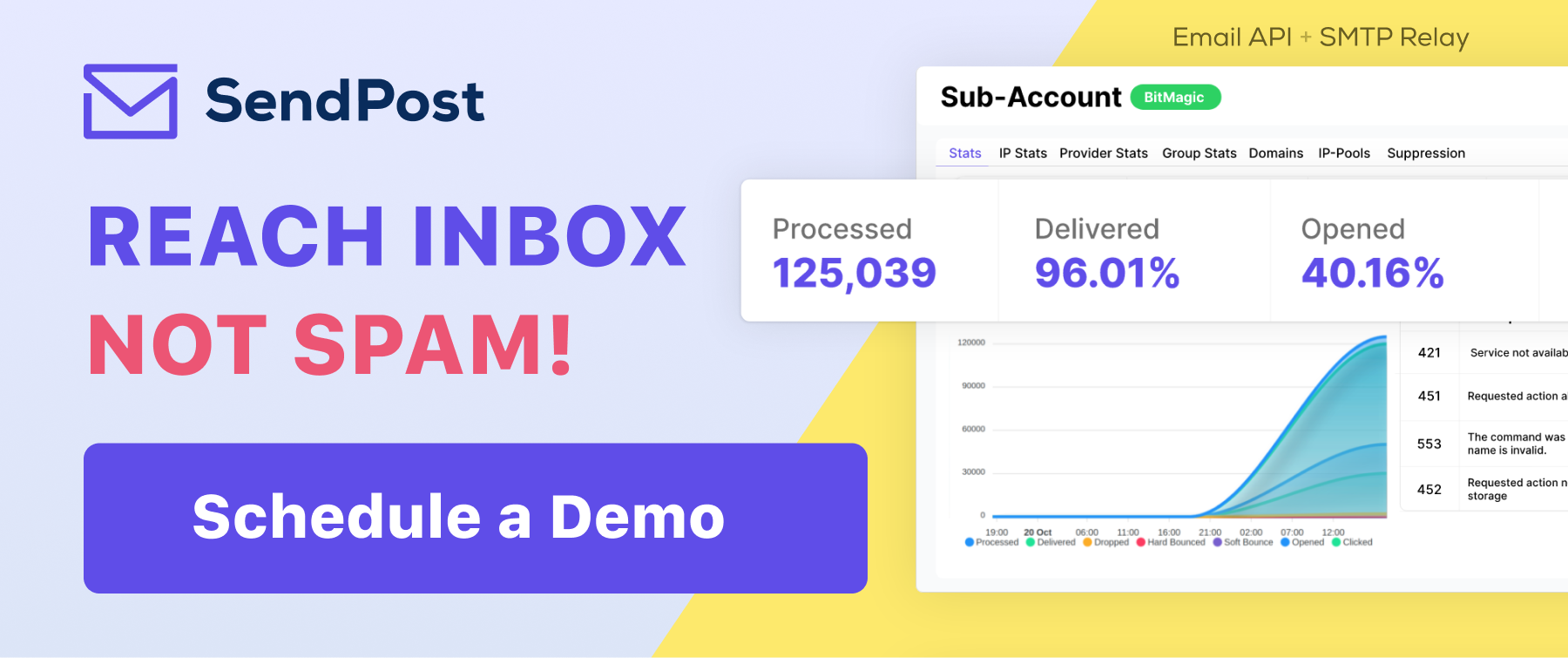SendPost Blog - Email API & SMTP
Email Deliverability Metrics: A Comprehensive Guide

In the world of email marketing, deliverability is key. After all, what good is a carefully crafted email campaign if it never even makes it to the inbox?
As an email marketer, you know this all too well. You've likely experienced the frustration of seeing low open rates or high bounce rates, and you've probably wondered what you can do to improve your email deliverability.
The good news is that there are a variety of metrics you can use to track your email deliverability and identify potential issues before they become major problems.
In this comprehensive guide, we'll walk you through the most important email deliverability metrics and show you how to use them to optimize your email campaigns. So whether you're a seasoned email marketer or just starting out, keep reading to learn everything you need to know about email deliverability metrics.
What is Email Deliverability?
Email deliverability is basically about how many emails you send actually end up being successfully received by your recipients. It's not just about hitting "send" - a lot of stuff like ISPs, mailbox providers, and spam filters can affect whether or not your emails actually make it to the inbox.
If you're an email marketer, it's super important to make sure your email deliverability is as high as possible. Why? Because the more emails that make it to the inbox, the better chance you have of getting them opened and read. Plus, when your messages don't end up in the spam folder, your sender reputation stays in good shape.
Delivery Rate
Delivery rate is the percentage of emails that were successfully delivered to the recipient's mailbox. To calculate delivery rate, divide the number of emails delivered by the number of emails sent and multiply by 100.
If your delivery rate is low, it could be due to a variety of reasons, such as poor list hygiene, spam filters, or technical issues. To improve your delivery rate, try cleaning your email list, ensuring that your content is not triggering spam filters, and using proper email authentication techniques like SPF, DKIM, and DMARC.
Open Rate
Open rate measures the percentage of recipients who opened your email. To calculate open rate, divide the number of unique opens by the number of delivered emails and multiply by 100.
If your open rate is low, it could be because your subject line is not engaging or because your email content is not relevant to your audience. To improve your open rate, try testing different subject lines, personalizing your emails, and segmenting your list to send more targeted content.
Bounce Rate
Bounce rate measures the percentage of emails that were undeliverable and returned to the sender. Bounces are classified as either hard (permanent) or soft (temporary). To calculate bounce rate, divide the number of bounced emails by the number of emails sent and multiply by 100.
If your bounce rate is high, it could indicate issues with your email list quality or email authentication. To fix this, try cleaning your email list, removing invalid or inactive email addresses, and ensuring that your email authentication techniques are properly set up.
Spam Complaint Rate
Spam complaint rate measures the percentage of recipients who marked your email as spam. To calculate spam complaint rate, divide the number of spam complaints by the number of delivered emails and multiply by 100.
If your spam complaint rate is high, it could indicate that your email content is not meeting your audience's expectations or that you are sending too many emails. To fix this, try improving your email content and frequency, providing clear opt-out options, and ensuring that you are only sending emails to people who have given you permission to do so.
Unsubscribe Rate
Unsubscribe rate measures the percentage of recipients who opted out of your email list. To calculate unsubscribe rate, divide the number of unsubscribes by the number of delivered emails and multiply by 100.
If your unsubscribe rate is high, it could indicate that your email content is not relevant or valuable to your audience or that you are sending too many emails. To fix this, try improving your email content, segmenting your list, and providing options for subscribers to control the frequency and type of emails they receive.
Final Thoughts
Ensuring strong email deliverability is key to the success of any email marketing campaign. By monitoring metrics such as delivery rate, open rate, bounce rate, spam complaint rate, and unsubscribe rate, email marketers can identify and address issues that can impact email engagement and conversion rates.
However, tracking email deliverability metrics is only one part of the equation. It's also important to make sure you're following best practices for email marketing, such as building a clean and engaged email list, using clear subject lines and CTAs, personalizing content, and avoiding spam triggers.
If you're looking to take your email marketing to the next level, consider using a tool like SendPost to streamline your email campaigns and improve your overall email deliverability. With features like email automation, segmentation, and analytics, SendPost can help you send better emails, reach more of your audience, and see better results from your campaigns.
So, don't let poor email deliverability hold you back. With the right tools and strategies in place, you can reach your email marketing goals and see your business grow.













